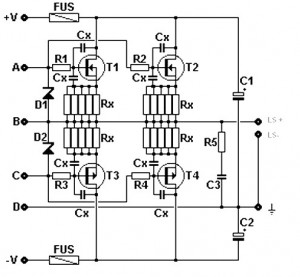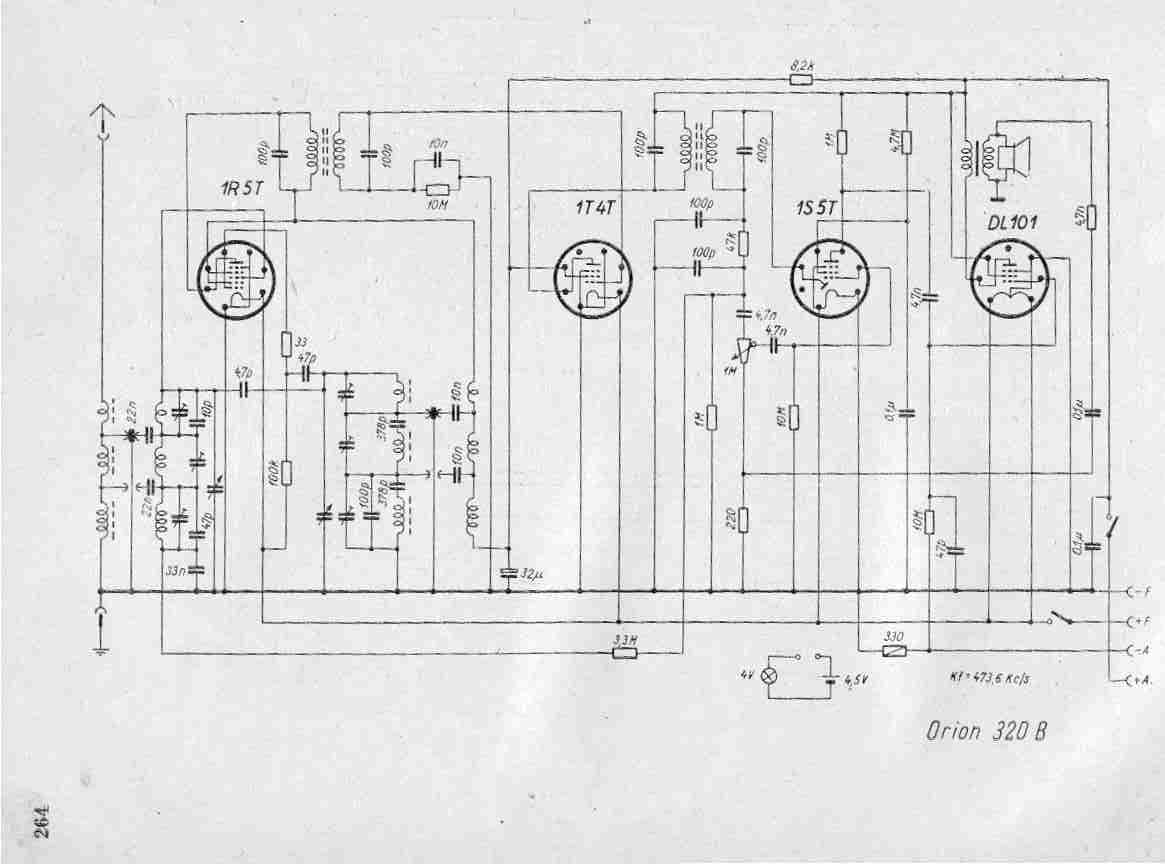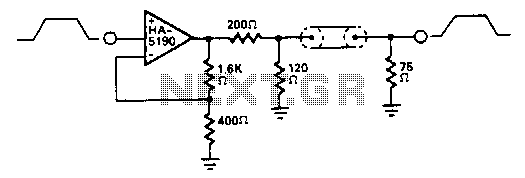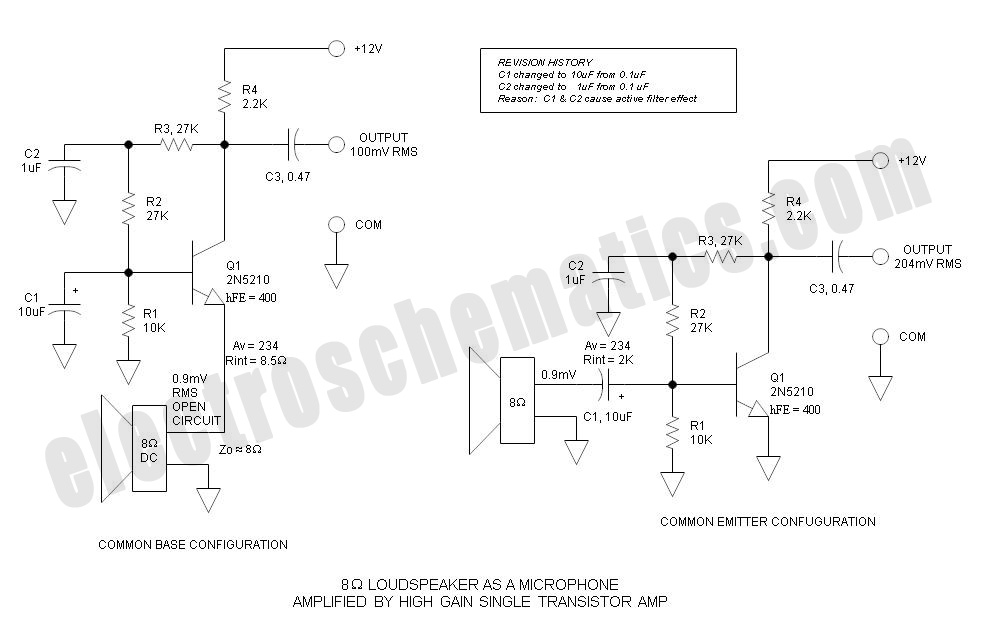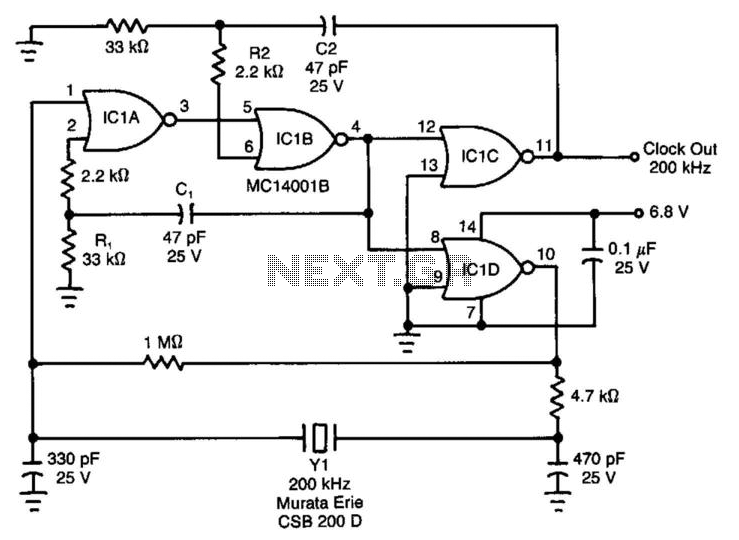
High power transistor amplifier circuits
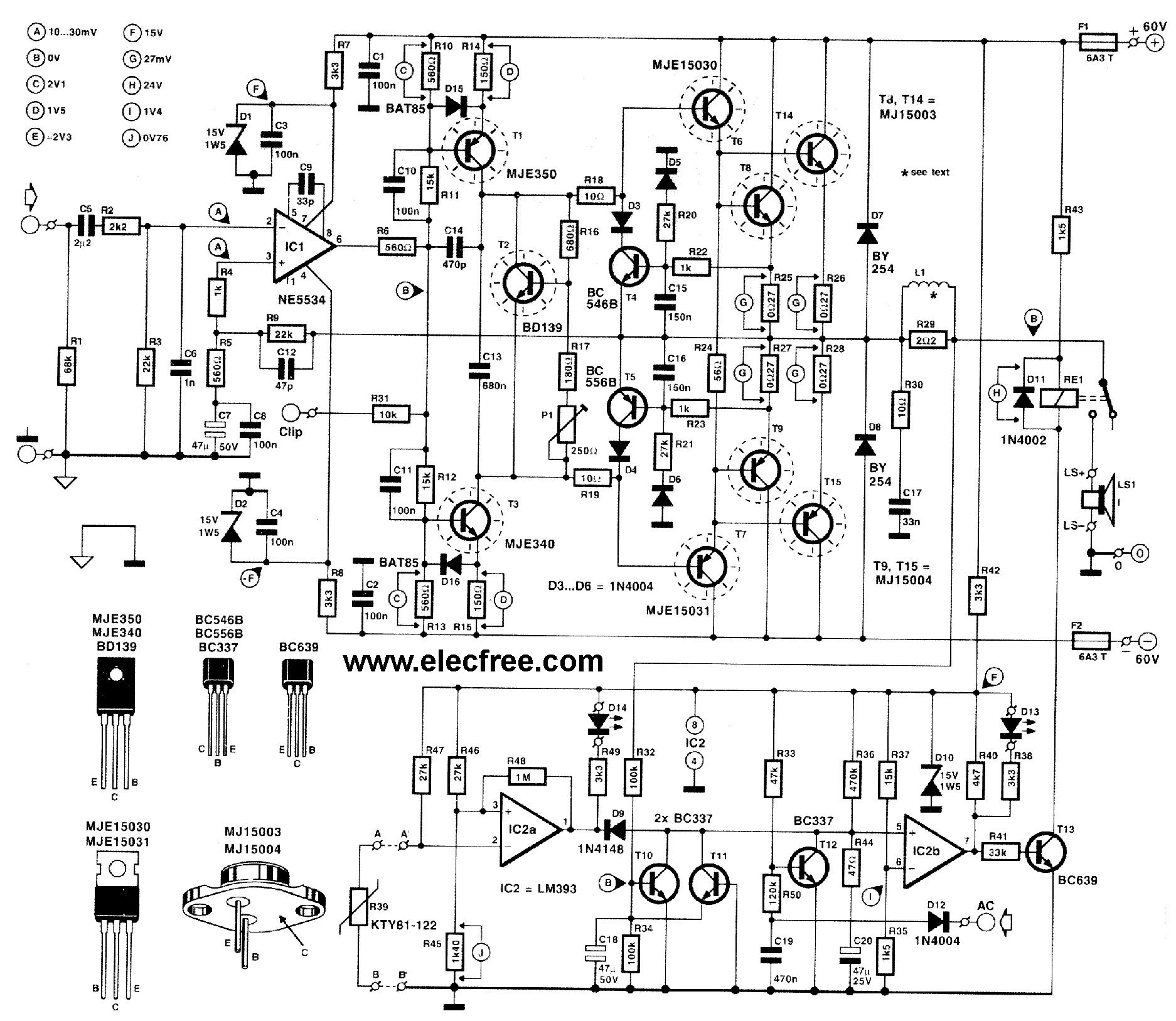
This circuit is designed for friends who are interested in high-power amplifier circuits. It can deliver approximately 300 Watts RMS and operates as an OCL (Output Capacitor-Less) Class AB amplifier, providing high sound power while systematically protecting the loudspeaker from damage. The circuit utilizes transistors, specifically MJ15003 and MJ15004, which ensure adequate power response. While the circuit is detailed and may not be suitable for novice hobbyists, it can be built by those willing to try. The design is intended for car audio applications, with a maximum output of 200 Watts, and is characterized by its Class AB operation, which offers moderate sound quality. However, care must be taken due to the complexity of the circuit and the need for precise adjustments.
This high-power amplifier circuit is engineered to deliver robust audio performance, with a focus on both power output and speaker protection. The OCL configuration eliminates the need for output capacitors, resulting in improved sound quality by minimizing phase shift and distortion. The use of MJ15003 and MJ15004 transistors is critical, as they are known for their high current handling capabilities and thermal stability, making them suitable for high-power applications.
The circuit's design incorporates a feedback mechanism that enhances linearity and reduces harmonic distortion, which is essential for achieving high-fidelity sound reproduction. Additionally, the Class AB operation allows for a balance between efficiency and sound quality, ensuring that the amplifier can deliver substantial power without overheating.
For those interested in constructing this amplifier, it is important to note that the circuit may require careful assembly and fine-tuning of components to achieve optimal performance. The complexity of the circuit may pose challenges for beginners, as it involves multiple stages of amplification and requires precise component selection. Proper heat dissipation measures, such as heat sinks for the transistors, should also be implemented to prevent thermal runaway and ensure long-term reliability.
In summary, this high-power amplifier circuit is a sophisticated design suitable for car audio enthusiasts who seek to enhance their sound system. With its considerable power output and protective features, it is a valuable addition to any audio setup, provided that the builder has the requisite skills and knowledge to navigate its complexity.Follow the request of friends who likes High power Amplifier Circuit. I then beg for to advise this circuit. It has can to give the electric power about 300Watt RMS unless. Still be amp OCL Model Class AB give sound tall power and certainly should systematically protect that excellent a loudspeaker then torn difficult. Besides still use Transistor replace the integrated circuit then give waste matter feeling cancels bland three goes up and have MJ15003 and MJ15004 then have respond electric good enough power. When friends see the circuit has already, will have plentiful detail, then inappropriate for hobby Electronics man type.
But if friends want to try build, have no a problem, be lucky. Today we try to come to see the idea power Amplifier for Car. I sees this circuit, designed come to well. There is tall drive arrives at 200W is the character Amp OCL very be Class AB amplifier make good moderately sound. Besides still systematically protect excellent loudspeaker. But I thinks this circuit may inappropriate with a novice. Because of use many equipments, circuit absorb overlap, must fine decorate thoroughly. But friends at like sound good quality As a result be worthwhile very. See be circumspect in power Amplifier for car circuit get yes. 🔗 External reference
This high-power amplifier circuit is engineered to deliver robust audio performance, with a focus on both power output and speaker protection. The OCL configuration eliminates the need for output capacitors, resulting in improved sound quality by minimizing phase shift and distortion. The use of MJ15003 and MJ15004 transistors is critical, as they are known for their high current handling capabilities and thermal stability, making them suitable for high-power applications.
The circuit's design incorporates a feedback mechanism that enhances linearity and reduces harmonic distortion, which is essential for achieving high-fidelity sound reproduction. Additionally, the Class AB operation allows for a balance between efficiency and sound quality, ensuring that the amplifier can deliver substantial power without overheating.
For those interested in constructing this amplifier, it is important to note that the circuit may require careful assembly and fine-tuning of components to achieve optimal performance. The complexity of the circuit may pose challenges for beginners, as it involves multiple stages of amplification and requires precise component selection. Proper heat dissipation measures, such as heat sinks for the transistors, should also be implemented to prevent thermal runaway and ensure long-term reliability.
In summary, this high-power amplifier circuit is a sophisticated design suitable for car audio enthusiasts who seek to enhance their sound system. With its considerable power output and protective features, it is a valuable addition to any audio setup, provided that the builder has the requisite skills and knowledge to navigate its complexity.Follow the request of friends who likes High power Amplifier Circuit. I then beg for to advise this circuit. It has can to give the electric power about 300Watt RMS unless. Still be amp OCL Model Class AB give sound tall power and certainly should systematically protect that excellent a loudspeaker then torn difficult. Besides still use Transistor replace the integrated circuit then give waste matter feeling cancels bland three goes up and have MJ15003 and MJ15004 then have respond electric good enough power. When friends see the circuit has already, will have plentiful detail, then inappropriate for hobby Electronics man type.
But if friends want to try build, have no a problem, be lucky. Today we try to come to see the idea power Amplifier for Car. I sees this circuit, designed come to well. There is tall drive arrives at 200W is the character Amp OCL very be Class AB amplifier make good moderately sound. Besides still systematically protect excellent loudspeaker. But I thinks this circuit may inappropriate with a novice. Because of use many equipments, circuit absorb overlap, must fine decorate thoroughly. But friends at like sound good quality As a result be worthwhile very. See be circumspect in power Amplifier for car circuit get yes. 🔗 External reference
